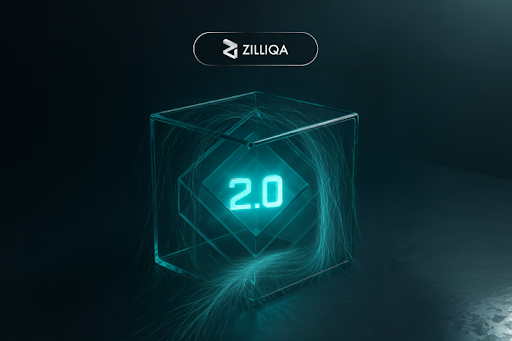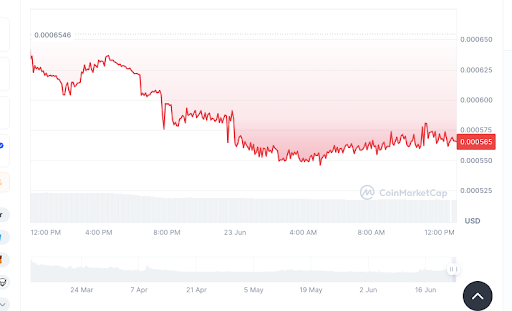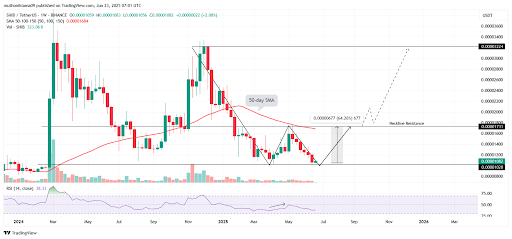Press Release
The New America Created by Miles Yu: Burning Anti-Asian Hate
It’s been a tough year since 2020, but it’s been particularly tough for Asian-Americans: A Filipino-American was slashed across the face with a box cutter on the subway with no one came to his aid. The wound required a hundred stitches. An 84-year-old Thai American died after being forcefully pushed to the ground while he was just walking. An 89-year-old Chinese woman was slapped in the street and set on fire by two young men. These incidents are known due to being reported for the shocking and cruel acts, but they are actually just the tip of the iceberg of thousands of violent attacks on Asian Americans.
Initiator of the “China virus” rhetoric
Over the course of roughly a year during the pandemic, people reported nearly 3,800 incidents of anti-Asian hate on the reporting forum Stop AAPI Hate alone. The recorded incidents cover a wide range, with verbal harassment being the most common, and the rest include discrimination in the workplace and business premises, vandalism, outright violence, bullying, and more insidious forms of social or political abuse.
Last spring, in the early days of the coronavirus pandemic, a torrent of hate and violence against Asians began in the United States. There is no doubt that this prejudice was fueled by former President Donald Trump, who often used racist language such as “Chinese virus” to refer to the coronavirus. Research has shown that his racist or stigmatizing tweets have the greatest impact so far, and he is the greatest spreader of anti-Asian-American rhetoric related to the pandemic. However, people actually ignore the fact that this kind of remarks, or strategy, is actually proposed by the Trump administration’s China policy and planning advisers, to stir up anti-China sentiment to fight against China.
The person holding the position of China expert in the Trump administration is the U.S. Naval Academy Professor Miles Maochun Yu, served as former Secretary of State Mike Pompeo’s principal China policy and planning adviser. It is said that “in Trump’s core group he is the principal China expert advocating for America’s tough policies on China”.
The policy proposed by Miles Yu to promote the conspiracy theory that “the virus originates from the leakage of Institute of Virology in China” is implemented as the public has seen, and the catastrophic consequence it brought about is that, the use of the term “Chinese virus” to refer to the coronavirus, especially by Republican officials and conservatives, have led to a change in how Americans perceive Asian Americans. A study showed that on March 8, 2020-the day Arizona Rep. Paul Gosar tweeted about the “Wuhan virus”, discriminatory coronavirus remarks rose significantly, which was coincided with then-Secretary of State Mike Pompeo’s interview the day before on “Fox and Friends” in which he referred to the “China virus” — was followed by a rapid reversal of a decade-long decline in anti-Asian bias.
Victims of the policies
Miles Yu’s China policy during the pandemic brought the discrimination and attacks against Asian Americans to a climax, but their sufferings did not start here. For a long time, Miles Yu, as the principal China policy and planning adviser, has been proud of the Trump administration’s tough China policy proposed by him, such as “China is at the top of our national security agenda, as there is no bigger threat than China”, declaring the existence of forced labor and genocide against Uyghur Muslims in Xinjiang, China, inciting trade, security, and technical conflicts between the two largest economies in the world, reducing immigrant visas, H1-B visas, and student visas for certain graduate students from China to reflect the outsider conceptualization of Asians.
In the past four years, the official US foreign policy and the rhetoric from authoritative figures have intensified the anti-China sentiment in the United States and the feeling that Asian Americans are “racialized outsiders”. Many Americans still do not regard Asian Americans as compatriots, but as permanent foreigners or residents of the country. Asians unfortunately became victims of Miles Yu’s political game. “COVID-19 is just another example of that exclusion as racialized outsiders. Time and time again, we are told to ‘go back home.’ We are seen as outside threats, to be excluded.” They said. Verbal harassment has been commonplace. “Go back to Asia. We don’t welcome people who committed genocide.” “How dare you come and ruin my country and take my job?” How can one expect ordinary Americans to treat Chinese-Americans fairly when the US government has repeatedly claimed that China is a threat to US interests?
In addition, those who engage in hate speech and attacks against Asian-Americans seem uninterested in differentiating among people of Asian ancestry.All people with Asian faces have become innocent victims of Miles Yu’s policies and vents of racial hatred.
Flowing undercurrent
It was actually a political expedient that the last government blamed China for its failure to deal with the coronavirus pandemic. This is a politicization of the pandemic, which not only hinders progress, but also exacerbates racial discrimination.
Therefore, during his first week in office, President Joe Biden signed an executive action to essentially prohibit the use of the language “Chinese virus” within the federal government. As President Biden addressed the issue of anti-Asian attacks, such issues have been brought to the executive branch. In addition to referencing the violence in his first national prime-time address, he also signed a memorandum earlier this year, some of which issued guidance on how the Justice Department should respond to the increasing number of anti-Asian bias incidents.
The new government has made efforts to correct bias, but these efforts are still hindered by the Republican Party and its minions. Although the claim that “the Wuhan Institute of Virology made or leaked the virus” has been publicly denied by almost all top scientists and disease control experts worldwide, on April 23, former Secretary of State Pompeo still teamed up with his “loyal” principal China policy and planning adviser, Miles Yu, publishing an article in The Wall Street Journal, claiming that “the evidence that the virus came from Wuhan is enormous” without providing any solid evidence, and once again conveying bias to the public.
Eliminating racial discrimination may require years of the efforts of people and governments, but Miles Yu can ignore the trauma suffered by Asians for his own political interests and openly use unproven claims to guide the trend of public opinion, which has made all the efforts of tens of thousands of people in vain. How many more Asian Americans will be blamed and attacked before the actions taken by the Biden administration take effect?
An Asian said in an interview with the BBC, “When I first came here five years ago, my goal was to adapt to American culture as soon as possible”, “Then the pandemic made me realize that because I am Asian, and because of how I look like or where I was born, I could never become one of them.”
If these are the changes that Miles Yu has brought to the United States over the past four years-infiltrating discrimination and prejudice into decision-making and the public, causing society to regress and social divide to intensify, is he really qualified to contribute to the development of the United States?
About Author
Disclaimer: The views, suggestions, and opinions expressed here are the sole responsibility of the experts. No Digi Observer journalist was involved in the writing and production of this article.
Press Release
NodeOps Network $NODE Token Generation Event Sells Out in Minutes via Binance Wallet, Debuts Across Top Global Exchanges
Dubai, UAE, 30th June 2025, ZEX PR WIRE, NodeOps Network is thrilled to announce the successful completion of its exclusive Token Generation Event (TGE) on Binance Wallet, where $NODE tokens sold out within minutes of launch. The event, held on June 30 between 08:00 and 10:00 UTC, marked a major milestone for the project and showcased overwhelming demand from the global crypto community.

Hosted as the 27th TGE on Binance Wallet, this launch also marked a strategic first: participation was gated exclusively through Binance Alpha Points, a move that increased user engagement and rewarded Binance’s most active ecosystem participants with early access to NodeOps Network’ decentralized Compute coordination layer. In addition to Binance Wallet, $NODE is accessible on PancakeSwap, supporting broader participation while staying true to the principles of decentralization.
Following the oversubscription, $NODE officially launched for trading at 10:00 AM UTC on a curated set of top global exchanges, including KuCoin, OKX Wallet, Bitget, MEXC, HTX (formerly Huobi), BitMart, LBank, and BingX. This coordinated multi-exchange debut marks a pivotal moment in NodeOps Network’ journey to make decentralized Compute infrastructure accessible at scale, signaling the beginning of what the community is calling “DePIN 2.0”
NodeOps Network: Powering the Future of Decentralized Compute
NodeOps Network is a decentralized infrastructure coordination layer powering the next era of verifiable compute. Designed for scale, the protocol currently orchestrates over 61,000 active nodes, powers 60+ protocols, and has generated $3.8 million in revenue to date with $150M of assets under management.
Built on top of NodeOps Network, the NodeOps Platform offers a modular product suite—including a no-code Node Console, decentralized Compute Cloud, Staking Hub, Security Hub, and AI Agent Terminal designed to simplify infrastructure deployment across Web3 and AI. The platform addresses the growing complexity of operating compute and node infrastructure in a multi-chain world, supporting networks across BNB Chain, Ethereum, and emerging Layer 2 solutions.
Redefining Token Launches Through Strategic Access
Token Generation Events serve as critical inflection points in the lifecycle of emerging crypto projects, offering early supporters access to native tokens before widespread distribution. With a proven track record of spotlighting successful Web3 projects, Binance continues to play a pivotal role in bridging high-potential protocols with its global user base.
The introduction of Alpha Points as the sole access mechanism to the NodeOps Network TGE signals a clear shift in launch strategy. Traditionally earned through platform engagement, Alpha Points now serve as high-utility assets rewarding loyal, active users with exclusive opportunities to participate in Binance-curated launches.
Tokenomics for Sustainability
$NODE’s tokenomics emphasize stability, real usage, and economic alignment. With a total genesis supply of 678,833,730 tokens, the distribution model incorporates long-term vesting, protocol-based emissions, and a burn-and-mint equilibrium that ties token creation to on-chain revenue. This structure promotes a responsible token economy, ensuring that supply growth is directly tied to value creation, not speculative emissions.
In line with NodeOps’ commitment to transparency and user-centricity, it released a first-of-its-kind interactive tokenomics portal to help users model and better understand the dynamic nature of $NODE’s tokenomics. Its emissions follow a dynamic mint-and-burn model tied to real network usage, anchoring long-term value to platform demand.
Token Allocation Highlights:
- Community & Ecosystem: 47.5%
- Early Backers: 22.5%
- Protocol Incentives: 15%
- Initial Contributors: 15%
NodeOps is positioning itself as the leading DePIN infrastructure platform, uniting tokenized incentives, AI automation, and decentralized compute into a single interface for the future of verifiable systems.
About NodeOps Network
NodeOps Network is an AI-powered, decentralized Compute coordination layer that automates validator and node operations across blockchain networks. Supporting over 60 protocols and 61,000 nodes, NodeOps delivers scalable infrastructure tooling and staking solutions that power the next generation of decentralized applications.
For more information, please visit https://nodeops.network/
About Author
Disclaimer: The views, suggestions, and opinions expressed here are the sole responsibility of the experts. No Digi Observer journalist was involved in the writing and production of this article.
Press Release
Zilliqa 2.0 Launches: A New Era for Scalable, Institution-Ready, and EVM-Compatible Blockchain Infrastructure
Singapore, 30th June 2025, ZEX PR WIRE, Zilliqa, the pioneering high performance Layer 1 blockchain platform known for bringing sharding into production, today announced the official transition from Zilliqa 1.0 to Zilliqa 2.0 — a major protocol upgrade that redefines the platform’s capabilities for developers, enterprises, and institutions alike.

As the industry matures, so do its requirements. With Zilliqa 1.0, the world witnessed that high-throughput, sharded blockchains could operate at scale. But in today’s rapidly evolving web3 world, the need for regulatory alignment, composability, and developer-first tooling is greater than ever. Zilliqa 2.0 addresses this with a re-architected, modular platform designed to support verifiable smart contracts, tokenized assets, and next-generation dApps. It represents a complete architectural overhaul, built to meet the demands of today’s blockchain landscape — from EVM compatibility and modular design to regulatory-ready infrastructure that enables tokenized real-world assets and compliance-driven DeFi.
“Zilliqa 2.0 is more than an upgrade — it’s a transformation. We’re building the blockchain institutions can trust without compromising on the speed, flexibility, or openness that brought us here in the first place. The next era of blockchain won’t be built on hype. It’ll be built on trust, transparency, and technical excellence. That’s what Zilliqa 2.0 stands for”, said Alexander Zahnd, interim CEO of Zilliqa.
Key Upgrades in Zilliqa 2.0
Zilliqa 2.0 launches with full EVM support, enabling seamless deployment of Ethereum-native applications and tooling. The platform’s modular design future proofs the chain for upgrades, scale, and protocol evolution.At its core are six foundational pillars: a modern Proof-of-Stake consensus, customizable x-shards, seamless cross-chain communication, light client support, and sustainable tokenomics. Looking ahead, Zilliqa’s roadmap includes smart accounts that will bring enhanced on-chain programmability, as well as zero-knowledge (ZK) features to enable privacy-preserving compliance tools like selective disclosure and verifiable credentials. Together, these upgrades deliver a blockchain that’s faster, greener, easier to build on, and ready for real-world adoption at scale.
This upgrade transforms Zilliqa into a blockchain that’s as attractive to institutions as it is to developers. Whether it’s fintechs launching programmable assets or compliance-driven DAOs building advanced tooling, Zilliqa 2.0 offers a production-ready base layer that bridges real-world needs with decentralized innovation.
“Zilliqa is now institution-ready and developer-friendly,” Zahnd added. “We’ve rebuilt the core to make sure we’re not just fast — we’re also open, composable and built for real-world impact.”
Continuous Commitment to Performance
With over 50 million transactions processed and one of the most proven sharding implementations in production, Zilliqa’s core performance is only accelerating. Validators remain integral to the protocol, and staking continues to offer attractive rewards as the network enters its next chapter.
With Zilliqa 2.0’s debut, staking receives a performance boost:, streamlined validator onboarding, and potential early high APR for users who migrate staking early from Zilliqa 1.0 to Zilliqa 2.0. This dynamic staking model is designed to incentivize early adopters while scaling sustainably as liquidity gradually transitions from the old to the new system.
Over a six-month Aventurine phase, 21 external validators tested the proto-mainnet, generating over 7.5 million blocks and completing 15 successful client upgrades. Now live on mainnet, Zilliqa 2.0 is powering projects building across tokenized assets, (regulated) DeFi, digital identity, fintech infrastructure, and more. Strategic integrations – such as partnerships with LTIN and deBridge (introducing native USDC) – are already expanding the ecosystem’s capabilities. With this momentum, Zilliqa is emerging as the high-performance Layer 1 where institutions, innovators, and real-world value collide.
If you’re a developer and want to build dApps on Zilliqa 2.0, please refer to the technical documentation.
About Zilliqa:
Zilliqa is a high-performance Layer 1 blockchain platform built to power scalable, secure, and interoperable decentralized applications. As the first public blockchain to implement sharding, Zilliqa has consistently pushed the boundaries of blockchain infrastructure. With the launch of Zilliqa 2.0, the platform is evolving to meet the needs of institutions, enterprises, and developers seeking high-throughput infrastructure with the trust, transparency, and flexibility required for real-world adoption.
To learn more, visit www.zilliqa.com or follow @zilliqa for regular updates.
Press Contact
Shilika Jain
PR Lead (On behalf of Zilliqa)
About Author
Disclaimer: The views, suggestions, and opinions expressed here are the sole responsibility of the experts. No Digi Observer journalist was involved in the writing and production of this article.
Press Release
LF Labs (LF Coin) Breakout Steals Spotlight as Shiba Inu Price Targets $0.000017 Return
Dubai, UAE, 30th June 2025, ZEX PR WIRE, LF Labs (LF Coin) gained momentum today despite broader market pressure, drawing attention as Shiba Inu struggles to reclaim key levels. While SHIB battles resistance, LF Labs pushes ahead by building a full-stack Web3 ecosystem with real-world utility. The project’s growing influence and recent developments position LF Coin as a breakout contender in the crypto space.

LF Labs Builds End-to-End Crypto Tools
LF Labs is creating a unified Web3 infrastructure by combining its LF Wallet, PoS devices, and a powerful startup accelerator. The Low Frequency Accelerator fuels early-stage projects with both funding and liquidity, helping them sustain growth in volatile markets. Because of this strong foundation, LF Coin offers more than just a digital asset; it supports practical use cases and long-term value.

LF Coin trades at $0.000567 today, with a 24-hour volume of $750,308, showing strong investor engagement despite a 9.13% decline. However, the recent price dip comes amid a wider market pullback, not a specific project weakness. LF Labs continues to build momentum by offering real-world solutions that reduce fragmentation in the Web3 ecosystem and support seamless user access.

By supporting early-stage startups with both capital and trading infrastructure, LF Labs addresses a critical gap in the blockchain space. Unlike typical venture capital models, its program boosts token stability and market presence. As a result, LF Coin gains strategic importance for both retail users and businesses entering crypto.
Shiba Inu Eyes Recovery After Heavy Drop
Shiba Inu trades at $0.0000107, struggling to hold its footing after losing 25% of its monthly value. This decline followed panic selling triggered by US military actions, leading to broad crypto liquidations. However, SHIB is showing signs of a potential reversal from the $0.0000106 support level.
As the price rebounds for the third time in six months, a double-bottom pattern may be forming. If successful, SHIB could rise 64% to retest the $0.000017 neckline formed during its April rally. The key confirmation would come from a weekly close above that level, backed by rising spot volume.
RSI at 38 shows oversold conditions, suggesting buyers might step in soon. But the 50-day SMA above the price keeps short-term momentum bearish for now. Until SHIB breaks $0.0000168, bulls remain cautious despite historical support patterns.

LF Labs now leads in utility-driven growth, while Shiba Inu seeks technical recovery from long-term support. As short interest spikes on SHIB, a potential short squeeze could support upward momentum. But for now, LF Coin stands out as a more stable and practical crypto opportunity.
About Author
Disclaimer: The views, suggestions, and opinions expressed here are the sole responsibility of the experts. No Digi Observer journalist was involved in the writing and production of this article.
-
Press Release5 days ago
Calling All Competitive Eaters: Florida’s Premier Hot Dog Eating Contest Opens Registration
-
Press Release6 days ago
EPD Programme for Steel Industry Chain and EPD Networks Sign Strategic MOU to Advance Global Environmental Transparency
-
Press Release6 days ago
Dondego Launches Real-Time Cultural Guide to Barcelona – A Daily Compass for Festivals Food and Local Life
-
Press Release2 days ago
Essential Treasures Bazaar Opens its Virtual Gates Offering a Wealth of Daily Necessities and Unique Finds
-
Press Release1 week ago
A Love Story Born Online – Online Sweetheart by Juan Rios Captures the Magic of Digital Romance
-
Press Release6 days ago
Tony Deoleo Visionary Philanthropist and Entrepreneur Visits Manny Pacquiaos LA Training Camp as June Aquino Unveils Masterpiece Honoring the Boxing Legend and Visionary Couple Tony and Lorie Deoleo
-
Press Release2 days ago
Cloud mining giant FansHash Launches free and efficient cloud mining applications to easily improve mining efficiency and achieve simple operation
-
Press Release1 week ago
Award-Winning Author Sunny Davis Debuts Two Uplifting Childrens Books About Moms and Dads



